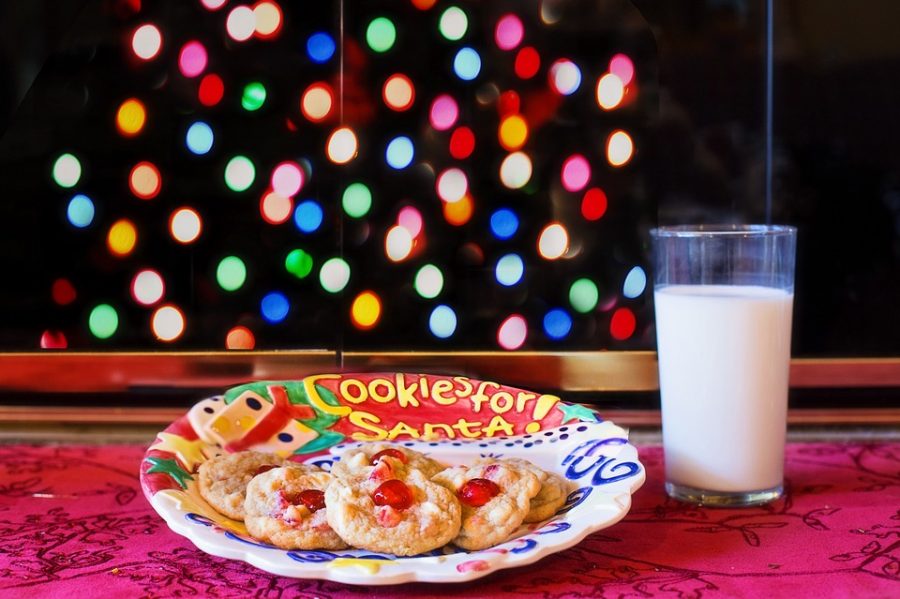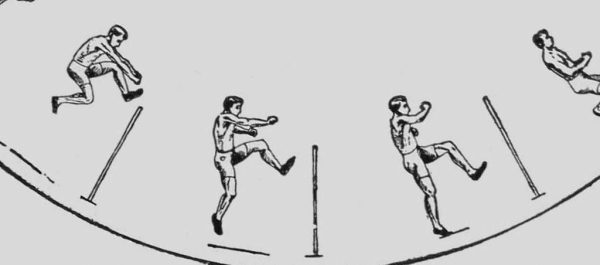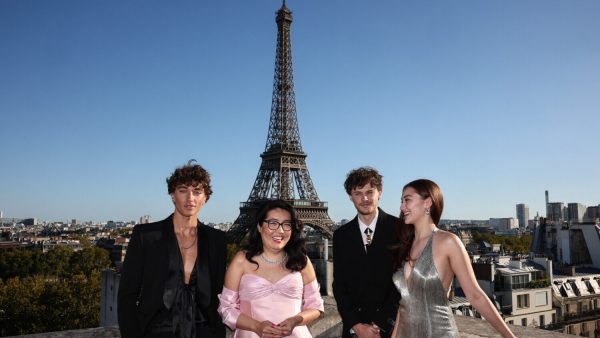The truth behind holiday superstitions
Waiting to be eaten, this plate of scrumptious cookies and glass of cold milk are ready for the jolly man in red to come down the chimney. Leaving cookies for Santa is a common holiday tradition many participate in every year, but many do not know the reason for this peculiar gesture.
December 19, 2018
Superstitions are associated with nearly all major holidays and festivals worldwide. Some believe in these superstitions because they think it will bring them beneficial effects, but others only see these acts as traditions. Many superstitions arise during Christmas and the holiday season, and some people do not understand where these traditions come from. One of the most shocking to people is why Christians celebrate Christmas. This festive holiday was not originally a Christian holiday and was not celebrated by Christians until the 1800s. Many people have annual traditions which they partake in during the holiday season and do not even know why they continue doing them year to year. Junior Jillian Brookshire pointed out, “I always do baking during the holidays because I think it’s fun to give people something delicious to brighten their day. But I have to wonder where traditions like this come from.”
Many families leave a plate of delicious Christmas cookies and a glass of milk for Santa on Christmas Eve. This tradition has been around for decades and became a popular holiday tradition during the 1930s. During the Great Depression, many parents tried to teach their children that it was important to give back and show gratitude for the gifts they received. Eighty years later, children still leave out cookies and milk for Santa, whether to give back and show the goodness in their hearts, or as a bribe to get more presents from Santa.
Carolers walking around neighborhoods, spreading the holiday spirit with their jolly energy and sweet harmonies, is a symbol that the holiday season is among us. Most people do not know that Christmas caroling was not originally singing the hopeful holiday songs that you see today. Caroling originated at the European Festival of Yule, where people would come together to dance and celebrate the winter solstice. As caroling evolved into the Christmas tradition we know today, they became hymns and songs, having no relation to dance.
During the holiday season, many people look forward to getting the chance to kiss their significant other under the mistletoe. The legend of mistletoe’s romantic properties dates back to Norse mythology. The god Frigg declared mistletoe a symbol of love and vowed to kiss those who walked underneath it. In the Middle Ages it became a holiday tradition, beginning with servants in England and later spreading to the middle class. Men were allowed to steal kisses from women standing underneath the plant, and refusing to do so was considered bad luck, similar to the tradition many participate in today.
A common dilemma of single people everywhere is who they are going to kiss on New Year’s Eve when the clock strikes midnight. It is not a bad sign not being able to find a New Year’s kiss, but, similar to other traditions, it dates back a long time. During the Renaissance era, masquerade balls were a popular event, especially on New Year’s Eve. At midnight, people would remove their masks and kiss to purify themselves of evil and start the new year off clean. Some believed neglecting the kiss would result in a loveless year to come; today people believe that, in order to start their year off right, they must kiss their crush.
Holiday traditions may leave you with questions wondering why you celebrate in certain ways. Now that you have read this article, you may sleep better at night not wondering why people leave cookies for Santa and other holiday traditions!












